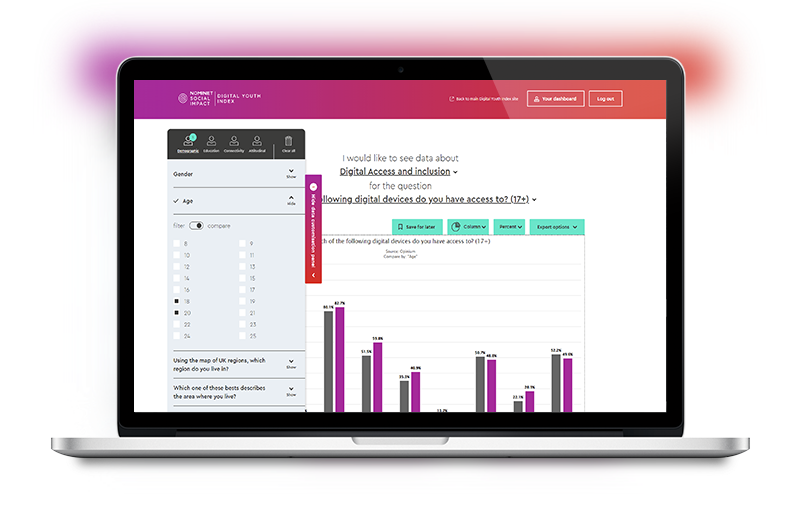95% of young people say they feel safe onlinedespite 1 in 4 having experienced violence, trolling or abuse, or sexual content
The more confident a young person is of their understanding of internet safety, the more likely they are to feel safe.
The vast majority of young people report they feel safe online, despite a quarter having encountered violence (26%), trolling or abuse (23%), or unsolicited sexual content (23%).
When interviewed, parents and professionals are highly sceptical that young people are as safe as their self-reported data suggests they feel. A typical reaction came from a teacher, who observed “I have spoken to countless pupils who think they are safe [but they] tell me things that means I know they likely are not.”
The more confident a young person is of their understanding of internet safety, the more likely they are to feel safe. 23% of young people who reported not understanding internet safety feel unsafe online, versus just 3% of those who claim to completely understand it, which would suggest knowledge delivers confidence.
Claimed understanding of internet safety increases throughout young people’s school years, but young adults aged 20+ report lower understanding of the risks and threats. We cannot establish from the data why this should be, e.g. if it is changes in the school curriculum, generational differences in access and use of technology, or perhaps the more you learn the more you realise you do not know, especially if entering the world of work.
Young people in the ABC1 (upper/middle class) social grade claim a significantly higher understanding of internet safety in the 17–19-year age group when compared to C2DE (working class/unemployed). Young people from lower income households (<£20k) track significantly lower than respondents from higher income households (>£60k) between the ages of 14 to 25 years.
Income and education seem to be the most significant factors in terms of acquiring a good understanding of digital safety, with the two most likely to be inter-related.
Why does this matter?
We know that parents and professionals’ decisions affect how young people access the internet and the experience they have online. A practical example is the decision on how to apply filters and parental controls, which directly impact young people’s internet access. It’s essential these decisions balance the need for young people to explore and learn from mistakes, with the requirement to stay safe. The data raises the question of how parents and professionals can effectively strike this balance for the young people in their care, given the apparent disconnect in their perception of young people’s internet safety. Striking the right balance is essential to enable young people to develop their digital resilience.
Implications
- How might we build a stronger shared understanding of internet safety between young people and the adults in their lives – as a basis for good decision making that supports digital resilience?
- What accounts for the disparities in young people’s self-reported understanding of internet safety between different income and age groups?
- What other measures of young people’s internet safety might add valuable context to their self-reported responses?




